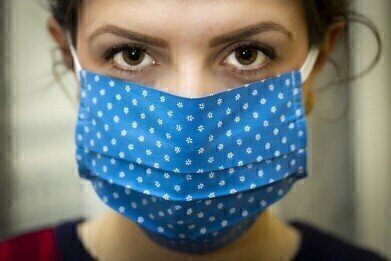Laboratory Products
What is the Best Material for Homemade Facemasks?
Jun 02 2020
In a bid to overcome the global personal protective equipment (PPE) shortage, many people have started fashioning their own homemade face masks. While there’s plenty of debate surrounding whether facemasks are an effective way to deter the spread of the coronavirus, many health experts are encouraging widespread use of masks in public. As a result, people around the world have been repurposing their sewing machines as DIY facemask workshops. According to new research conducted by the American Chemical Society, a combination of cotton and natural silk or chiffon is one of the most effective ways to filter out microscopic aerosol particles and help prevent the spread of COVID-19.
Cotton and natural silk or chiffon effective at blocking aerosol droplets
The findings were published in ACS Nano and explain how materials made from a blend of cotton and natural silk or chiffon can effectively block tiny aerosol droplets spread through coughing, sneezing, speaking and breathing. While most aerosols can easily infiltrate cloth fibers, co-author of the study Supratik Guha says certain blends can be effective at blocking particles ranging from between 10 nm to 6 μm in diameter.
One particular combination of fabrics, tightly woven cotton sandwiched between a sheer material known as polyester-spandex chiffon, blocked between 80 to 99% of particles. This puts it on par with the performance of an N95 medical mask used in hospitals. Replacing the polyester-spandex chiffon with natural silk offered similar results.
A mechanical and electrostatic barrier
The team muse the success of the combination lies in the ability of materials with a tight weave such as cotton to provide a physical barricade, while statically charged textiles such as polyester-spandex chiffon and natural silk form an electrostatic wall. “We speculate that the enhanced performance of the hybrids is likely due to the combined effect of mechanical and electrostatic-based filtration,” reads the abstract.
Of course, unlike N95 medical masks homemade cloth masks don’t offer an airtight seal. From an infection risk perspective, this can significantly reduce effectiveness. “Our studies also imply that gaps (as caused by an improper fit of the mask) can result in over a 60% decrease in the filtration efficiency, implying the need for future cloth mask design studies to take into account issues of “fit” and leakage, while allowing the exhaled air to vent efficiently,” add the authors.
From epidemiology to cancer research, advanced equipment plays an important role in laboratories around the world. For a closer look at the data and criteria to consider when selecting new refrigerators, don’t miss ‘Comparing the energy and temperature performance of laboratory fridges’ with insight from Andy Evans on behalf of Scientific Laboratory Supplies Ltd.
Digital Edition
Lab Asia 31.2 April 2024
April 2024
In This Edition Chromatography Articles - Approaches to troubleshooting an SPE method for the analysis of oligonucleotides (pt i) - High-precision liquid flow processes demand full fluidic c...
View all digital editions
Events
Apr 28 2024 Montreal, Quebec, Canada
May 05 2024 Seville, Spain
InformEx Zone at CPhl North America
May 07 2024 Pennsylvania, PA, USA
May 14 2024 Oklahoma City, OK, USA
May 15 2024 Birmingham, UK



.jpg)














